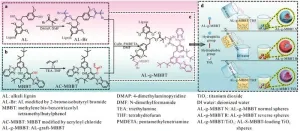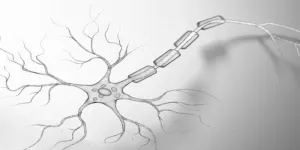(Press-News.org) Large-scale removal of discarded fishing gear and other plastic debris from the waters of Northwestern Hawaii meaningfully reduced entanglement rates of endangered Hawaiian monk seals, according to a new study. The findings, which are drawn from more than four decades of data, offer promising evidence that marine debris cleanup programs are successful and that reducing plastic inputs and scaling up removal efforts could maximize conservation outcomes across marine ecosystems worldwide. Plastic pollution severely threatens marine ecosystems, with derelict fishing gear being particularly harmful. Since the 1970s, abandoned, lost, or otherwise discarded plastic fishing gear has become widespread, continuing to trap and kill marine life even after being lost or discarded. For example, despite being remote and protected within the Papahānaumokuākea Marine National Monument, the Northwestern Hawaiian Islands are far from pristine due to the ever-present accumulation of plastic marine debris, which includes over 50 metric tons of abandoned fishing gear annually. Entanglement in this debris represents a significant threat to the region’s population of endangered Hawaiian monk seals – one of the rarest pinnipeds in the world. To mitigate this harm, many cleanup efforts have been established to remove plastic debris from marine environments worldwide; in the Northwestern Hawaiian Islands, these have been ongoing since the 1980s. However, evaluation of the efficacy of these cleanup initiatives and their associated ecosystem and conservation benefits has been lacking. Jason Baker and colleagues analyzed more than 40 years of Hawaiian monk seal debris entanglement records, detailed monk seal monitoring data, and spatial and temporal data on plastic debris removal and found that large-scale cleanup efforts significantly reduced entanglement risks. Baker et al. discovered that the effectiveness of such programs is influenced by the initial entanglement rates, the amount of debris removed, and the timing of removal efforts. Locations like Lisianski Island, which had the largest baseline amounts of plastic debris and entanglement risks, saw the greatest impact from cleanup efforts. According to the authors, the observed reduction in monk seal entanglement is a proxy for broader ecological benefits, suggesting that other species and ecosystem functions also benefit from debris removal. Although the findings underscore the benefits of marine plastic removal, Baker et al. argue that preventing plastic pollution at its source, particularly from regulated and illegal fisheries, is a more effective long-term solution than merely mitigating damage after it occurs.
Thea Johanos, a study co-author, has worked for the monk seal program since the early 1980s and is largely the architect of the field data collection protocols that have been used for decades, notes Jason Baker.
END
Removal of marine plastic fishery debris greatly reduces entanglement threat for endangered Hawaiian monk seals
Summary author: Walter Beckwith
2024-09-26
ELSE PRESS RELEASES FROM THIS DATE:
Climate change likely to increase diarrheal disease hospitalizations by 2100s
2024-09-26
By 2100, hospitalizations from diarrheal diseases are predicted to increase in the city of Dhaka in Bangladesh as a result of climate change, even if global warming stays under 2 degrees Celsius. Farhana Haque and colleagues from University College London, London School of Hygiene and Tropical Medicine and icddr,b report these findings in a new study published September 26 in the open access journal PLOS Neglected Tropical Diseases.
As one of the world’s most densely population cities, Dhaka deals with a high burden of diarrheal diseases. While some studies have looked at how weather affects diarrhea in Bangladesh, few have examined the future impact of climate ...
Cleveland Clinic researchers discover new bacterium that causes gut immunodeficiency
2024-09-26
September 26, 2024, Cleveland: Cleveland Clinic researchers have discovered a new bacterium that weakens the immune system in the gut, potentially contributing to certain inflammatory and infectious gut diseases.
The team identified the bacterium, Tomasiella immunophila (T. immunophila), which plays a key role in breaking down a crucial immune component of the gut’s multi-faceted protective immune barrier.
Identifying this bacterium is the first step to developing new treatments for a variety of inflammatory and infectious gut diseases. These conditions, including inflammatory ...
Research reveals impact of gut microbiome on hormone levels in mice
2024-09-26
Francis Crick Institute press release
Under strict embargo: 19:00hrs Thursday 26 September 2024
Peer reviewed
Experimental study
Animals
Researchers at the Francis Crick Institute have shown that the balance of bacteria in the gut can influence symptoms of hypopituitarism in mice.
They also showed that aspirin was able to improve hormone deficiency symptoms in mice with this condition.
People with mutations in a gene called Sox3 develop hypopituitarism, where the pituitary gland doesn’t ...
Lignin-based sunscreen offers natural and high-performance UV protection
2024-09-26
In a significant breakthrough for the cosmetics industry, researchers have developed a new type of sunscreen using lignin, a naturally abundant polymer, and titanium dioxide (TiO2). The study, led by Yarong Li and Zhiguang Tang, was published in the Journal of Bioresources and Bioproducts and details the innovative use of a dual-modified lignin sub-microsphere to enhance the SPF and improve the color of sunscreens.
Lignin, a byproduct of the pulp industry, is known for its UV-absorbing properties and antioxidant capabilities. However, its application in commercial sunscreens has been limited due ...
How are stretch reflexes modulated during voluntary movement?
2024-09-26
How did the bodies of animals, including ours, become such fine-tuned movement machines? How vertebrates coordinate the eternal tug-o-war between involuntary reflexes and seamless voluntary movements is a mystery that Francisco Valero-Cuevas’ Lab in USC Alfred E. Mann Department of Biomedical Engineering, set out to understand. The Lab’s newest computational paper published in the Proceedings of the National Academy of Sciences (PNAS) adds to the thought leadership about the processing of sensory information and control of reflexes during voluntary movements—with implications as to how its disruption could ...
Organoids derived from gut stem cells reveal two distinct molecular subtypes of crohn’s disease
2024-09-26
Crohn’s disease — an autoimmune disorder — is characterized by chronic inflammation of the digestive tract, resulting in a slew of debilitating gastrointestinal symptoms that vary from patient to patient. Complications of the disease can destroy the gut lining, requiring repeated surgeries. The poorly understood condition, which currently has no cure and few treatment options, often strikes young people, causing significant ill-health throughout their lifetime. One barrier to making progress in developing treatments has been the lack of preclinical animal models that accurately ...
Rates of sudden unexpected infant death changed during the COVID-19 pandemic
2024-09-26
HERSHEY, Pa. — The risk of sudden unexpected infant death (SUID) and sudden infant death syndrome (SIDS) increased during the COVID-19 pandemic compared to the pre-pandemic period, especially in 2021, according to a new study led by researchers at the Penn State College of Medicine. Monthly increases in SUID in 2021 coincided with a resurgence of seasonal respiratory viruses, particularly respiratory syncytial virus (RSV), suggesting that the shift in SUID rates may be associated with altered infectious disease transmission.
They ...
Genetic rescue for rare red foxes?
2024-09-26
A rescue effort can take many forms – a life raft, a firehose, an airlift. For animals whose populations are in decline from inbreeding, genetics itself can be a lifesaver.
Genomic research led by the University of California, Davis, reveals clues about montane red foxes’ distant past that may prove critical to their future survival. The study, published in the journal Molecular Biology and Evolution, examines the potential for genetic rescue to help restore populations of these mountain-dwelling red foxes. The research is especially relevant for the estimated ...
Extreme heat impacts daily routines and travel patterns, study finds
2024-09-26
A groundbreaking new study conducted by a team of researchers from Arizona State University, University of Washington and the University of Texas at Austin reveals that extreme heat significantly alters how people go about their daily lives, influencing everything from time spent at home to transportation choices. The study, titled "Understanding How Extreme Heat Impacts Human Activity-Mobility and Time Use Patterns," was recently published in Transportation Research Part D and underscores the urgent need for policy action ...
ReadCube expands literature management with new AI Assistant and comprehensive search
2024-09-26
Digital Science announces ReadCube Pro, an AI-powered expansion of ReadCube, offering researchers new tools to simplify and accelerate literature management and literature monitoring workflows.
The new AI Assistant and Literature Monitoring in ReadCube – an award-winning leader in literature management and full-text document delivery – transform the way research teams access, organize, review and monitor scholarly literature by providing them with enhanced search capabilities while helping to significantly reduce time spent ...
LAST 30 PRESS RELEASES:
Survey reveals ethical gaps slowing AI adoption in pediatric surgery
Stimulant ADHD medications work differently than thought
AI overestimates how smart people are, according to HSE economists
HSE researchers create genome-wide map of quadruplexes
Scientists boost cell "powerhouses" to burn more calories
Automatic label checking: The missing step in making reliable medical AI
Low daily alcohol intake linked to 50% heightened mouth cancer risk in India
American Meteorological Society announces Rick Spinrad as 2026 President-Elect
Biomass-based carbon capture spotlighted in newly released global climate webinar recording
Illuminating invisible nano pollutants: advanced bioimaging tracks the full journey of emerging nanoscale contaminants in living systems
How does age affect recovery from spinal cord injury?
Novel AI tool offers prognosis for patients with head and neck cancer
Fathers’ microplastic exposure tied to their children’s metabolic problems
Research validates laboratory model for studying high-grade serous ovarian cancer
SIR 2026 delivers transformative breakthroughs in minimally invasive medicine to improve patient care
Stem Cell Reports most downloaded papers of 2025 highlight the breadth and impact of stem cell research
Oxford-led study estimates NHS spends around 3% of its primary and secondary care budget on the health impacts of heat and cold in England
A researcher’s long quest leads to a smart composite breakthrough
Urban wild bees act as “microbial sensors” of city health.
New study finds where you live affects recovery after a hip fracture
Forecasting the impact of fully automated vehicle adoption on US road traffic injuries
Alcohol-related hospitalizations from 2016 to 2022
Semaglutide and hospitalizations in patients with obesity and established cardiovascular disease
Researchers ‘listen in’ to embryo-mother interactions during implantation using a culture system replicating the womb lining
How changing your diet could help save the world
How to make AI truly scalable and reliable for real-time traffic assignment?
Beyond fragmented markets: A new framework for efficient and stable ride-pooling
Can shape priors make road perception more reliable for autonomous driving?
AI tracks nearly 100 years of aging research, revealing key trends and gaps
Innovative techniques enable Italy’s first imaging of individual trapped atoms
[Press-News.org] Removal of marine plastic fishery debris greatly reduces entanglement threat for endangered Hawaiian monk sealsSummary author: Walter Beckwith





